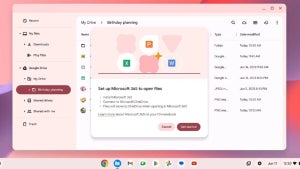There are more and more blackouts all over the world, which leave families without electricity for a long time and are causing situations in which one must be prepared for survival. Cuba is the country that is suffering the most in recent months, but it is something that can be extrapolated to the whole world.
So that we do not have problems when it comes to survive in case of power outages, we present some applications that can serve perfectly if we are lucky enough to have battery in the cell phone.

Power outage survival applications
1. Tiny Flashlight
An indispensable function for blackouts is to turn your phone into a flashlight. Although every cell phone usually already has a built-in flashlight function, we recommend Tiny Flashlight, a perfect application that optimizes this function and provides the sufficient light that is needed in these cases.
2. First Aid – American Red Cross
This application has been created by the International Red Cross, and is therefore an official app. It is a kind of instruction manual in which there are guides on what to do in case of accidents, illnesses and other problems. In addition, you can connect with emergency services directly through the app.
3. Red Panic Button
Something very useful also in the event of a blackout is a panic button in case something serious happens. With this app you can immediately connect with previously established contacts through a help message.
4. Offline Survival Manual
Thanks to this app you can have in your hand everything you need to survive in case of a blackout. It is a manual that does not require an internet connection and is full of tips to help you get by if you are in trouble.

Why are there so many blackouts?
Cuba has suffered three major power outages in the last month of February, which has generated concern among residents and authorities in the country. The first blackout occurred on February 4, affecting a large part of the island for several hours. The second took place on February 15, and the third on February 21.
These outages have left many Cubans without power and without access to basic services such as water and electricity. The Cuban government has attributed the outages to a combination of factors, including high demand for electricity during the summer months, limited fuel supplies and aging infrastructure. The government has also cited the effects of the U.S. trade embargo, which has made it difficult to import equipment and supplies needed to maintain the country’s power grid.
The blackouts have had a significant impact on daily life in Cuba, with some residents reporting difficulties accessing food and other basic necessities due to the lack of electricity. Concerns have also been raised about the safety of the country’s medical facilities, which rely heavily on electricity to power life-saving equipment.
The Cuban government has responded to the crisis by implementing emergency measures to address the blackouts. These measures include the deployment of additional generators and the reduction of electricity consumption in government buildings and public spaces. The government has also called on the population to conserve electricity by reducing the use of air conditioning and other high energy appliances.
However, these emergency measures may not be enough to prevent future blackouts, as Cuba’s power grid remains vulnerable to a number of factors, including natural disasters, equipment failures, and fuel shortages. To address these problems, the Cuban government will need to invest in improving its power grid infrastructure, including the development of renewable energy sources such as wind and solar power. In addition, the government will need to address the effects of the U.S. trade embargo, which has limited Cuba’s ability to import supplies and equipment needed to maintain its electrical grid.


